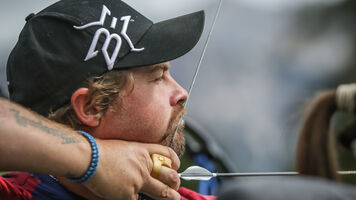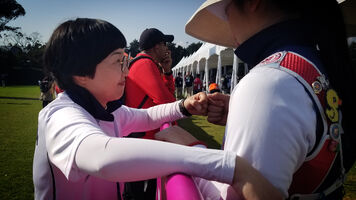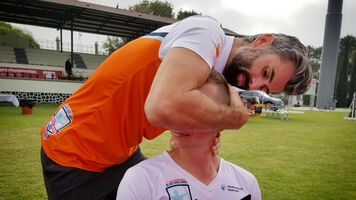Why do arrows bend?
The saying “straight as an arrow” really isn’t true. When an arrow is released from a bow, it bends and twists its way to the target, rather than keep its perfectly-straight form.
Telling your friends this might be met with strange reactions – but it really is true, and very obvious in slow motion footage. But why, you might ask?
When the archer releases the string, it exerts a lot of pressure on the back of the stationary arrow, sitting in the bow. As the string snaps back to its resting position, it transfers kinetic energy to the shaft via the nocking point.
The arrow can’t react to all this energy instantaneously, and different parts gain momentum at different speeds. In essence, the back of the arrow, which is the first to receive energy from the string, moves faster than the front.
Unable to leave the bow immediately, the arrow starts to absorb some (a small amount) of that energy by bending, before it gets on its way to the target.
In an arrow shot from a recurve bow, the bend is to the left and right because the string has to get around the archer’s fingers on its way back to its resting position. This adds a horizontal element to the shot, and is why recurve archers need to use a pressure button to make sure the arrow passes the riser and leaves travelling straight. (All this is often referred to as ‘archers paradox’.)
In an arrow shot from a compound bow, there is no horizontal influence, because the fingers aren’t used directly on the string. Mechanical release aids remove the left-right waggle, but the pressure comes in the vertical plane (from the string), and the rest only contacts the arrow from the bottom – meaning the arrow wobbles up and down.
The further away an arrow is from the bow, the straighter it will fly – as the energy spent on bending lessens. Vanes or fletchings on the back of the arrow speed up this process, as they slow down the back of the shaft, which is the part travelling faster.
Every arrow in flight has two nodes, one near the back and one near the front. Nodes are points on the shaft that remain in the same place while everything else bends.
A line between these two nodes is the straight line that points where the arrow is heading.
Straighter than an arrow, you might say!
Header video produced in association with Archery 360.



